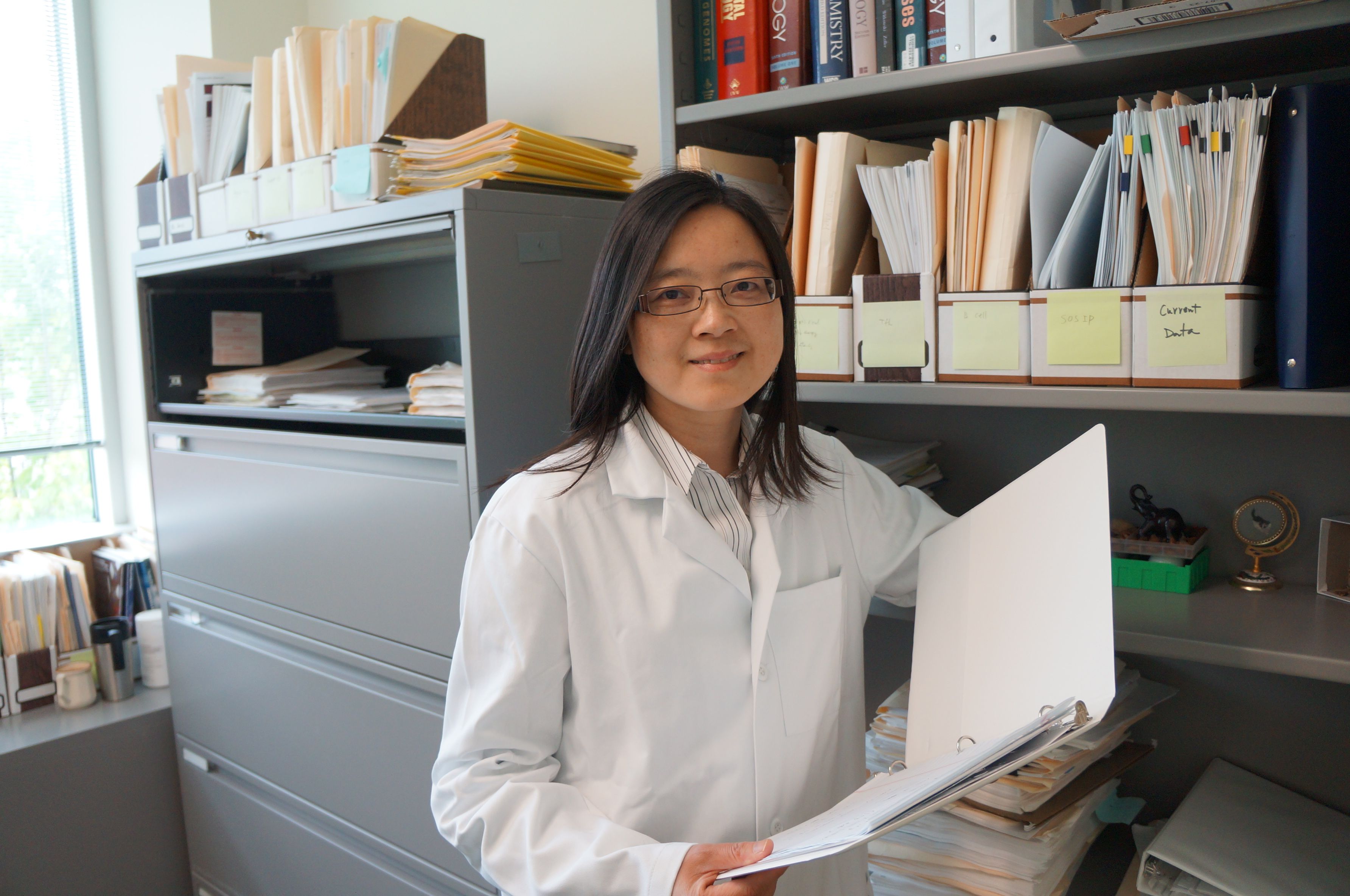IBBR Scientist's Remarkable Discovery Premiers in Two Publications
By Tiffany Stone
FRONT COVER OF IMMUNITY, April 19, 2016
THE JOURNAL OF IMMUNOLOGY, MAY 1, 2016
Yuxing Li, PhD, IBBR Associate Professor, led a groundbreaking study that was spotlighted on the front cover of Immunity, a renowned scientific publication. The research identified an antibody in its intermediate maturation stage whose mature form was found in a powerful class of molecules effective against HIV. Knowledge of the anti-HIV antibodies’ evolution and how it develops could be the key to developing a vaccine to prevent the spread of the disease.
To conduct this study, the team used an antibody from an HIV-infected Chinese patient. The patient was chosen because, after screening hundreds of patients, researchers found that his immune system created antibodies that showed a promising response. Targeting the HIV virus is very challenging because it mutates rapidly and builds a strong defense of glycan molecules on the surface of its envelope glycoproteins. Also, there are many different strains of the virus.
The study successfully identified this young antibody and determined that it can neutralize some HIV strains, but not all. Through structural analysis, the scientists were able to determine why it wasn’t effective for all strains. The findings in this study have provided a road map toward figuring out how to improve the antibody response, which will help researchers modify the vaccine and, eventually, prevent people from ever getting the infection.
The research was an international collaboration led by Li, Yiming Shao of the Chinese Center for Disease Control and Prevention (China CDC), Peking University and Nankai University, Jiang Zhu, and Ian Wilson of the Scripps Research Institute.
Currently, some 36 million people worldwide are living with HIV/AIDS. Since the beginning of the epidemic in 1982, more than 70 million people have been infected with the HIV virus and about 35 million people have died of HIV.
The front cover of Immunity and the article can be found through the following links:
http://www.cell.com/immunity/issue?pii=S1074-7613(15)X0005-7
http://www.cell.com/immunity/fulltext/S1074-7613(16)30095-4
 The HIV research of two IBBR Scientists was also published in the Journal of Immunology as a feature article. Yimeng Wang, PhD, IBBR post-doctoral associate, was the first author and Yuxing Li, PhD, IBBR Associate Professor, was the Senior and Correspondence author.
The HIV research of two IBBR Scientists was also published in the Journal of Immunology as a feature article. Yimeng Wang, PhD, IBBR post-doctoral associate, was the first author and Yuxing Li, PhD, IBBR Associate Professor, was the Senior and Correspondence author.
The study focused on delineating the vaccine candidate’s elicited neutralizing antibody response and targeting the receptor binding site (CD4 binding site) of HIV-1 envelope glycoproteins (Env), a functional site that the virus uses to infect host cells. They used a single B cell sorting approach to isolate monoclonal antibodies targeting the CD4 binding site of HIV Env molecule, and then they studied their binding mode to the HIV Env and how they neutralize the virus. They are also able to track the evolution of the antibody response over the immunization course by interrogating the genetic and functional parameters of these antibody clones.
It is important for the vaccine designers to see that the vaccine can stimulate the antibody response by activating the B cell clones targeting the Env CD4 binding site and figure out a way to efficiently expand these B cell clones to produce protective antibodies. This article by Wang, et al, paves the way to provide high resolution longitudinal insight into antibody responses stimulated by vaccination. This article can be found through the following link: http://www.jimmunol.org/content/196/9/3729
